Nestled along the southern coastline of Los Angeles County lie two significant seaports, namely the Port of Los Angeles and the Port of Long Beach. Together, these twin ports form the San Pedro Bay Port Complex, a vast expanse covering more than 15,000 acres of land and water in the San Pedro Bay region.
Long Beach Port and Port Los Angeles
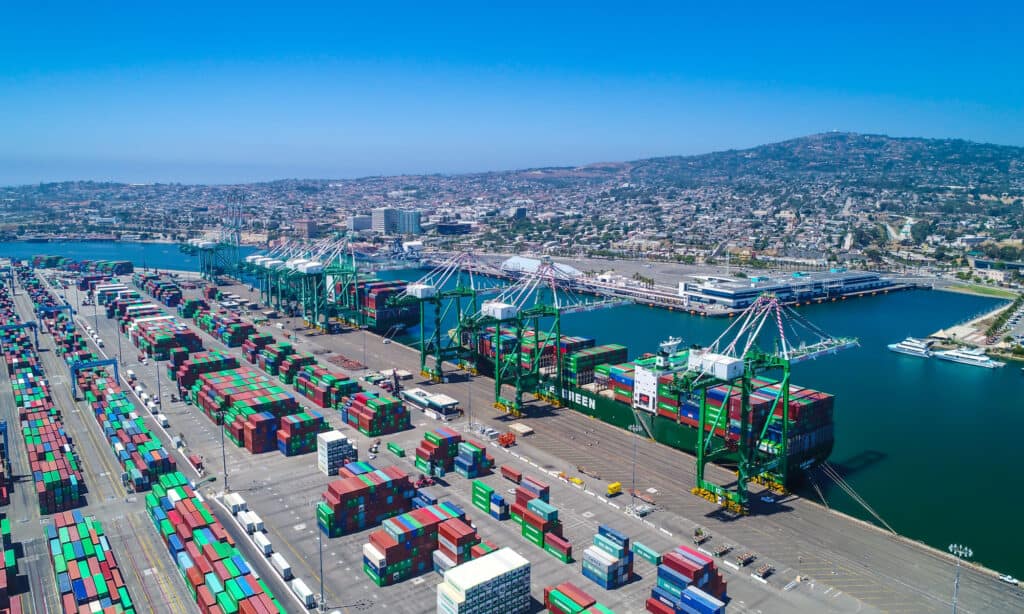
Beyond their cargo-handling operations, Port Los Angeles and Long Beach Port serve as caretakers of San Pedro Bay’s marine wildlife, embodying the role of environmental stewards.
©Kirk Wester/Shutterstock.com
These ports play a pivotal role in the nation’s economy, as they efficiently manage nearly 40% of all waterborne containers imported to the United States annually. The Port Complex is a significant local, regional, and national economic engine, fostering job growth, facilitating commerce, and promoting tourism throughout Southern California.
Beyond their cargo-handling operations, these ports also serve as caretakers of San Pedro Bay’s marine wildlife, embodying the role of environmental stewards. California residents entrust the port to ensure its activities coexist harmoniously with preserving the region’s natural resources.
Over the years, the ports have undertaken four comprehensive biological surveys of the Port Complex, thoroughly examining both harbors’ ecological characteristics. These surveys have assessed seasonal variations, monitored the presence of invasive species, and compared the various habitats within the Port Complex.
The most recent survey delivers encouraging findings, affirming that commercial port operations and critical San Pedro Bay habitat coexist and thrive harmoniously. Water clarity has improved, special-status species are thriving, and there is no significant disruption to the bay’s ecosystem caused by non-native species. The study you can find here emphasizes the ports’ success in balancing their economic importance with their responsibility as stewards of the environment.
Marine Life Under The Port
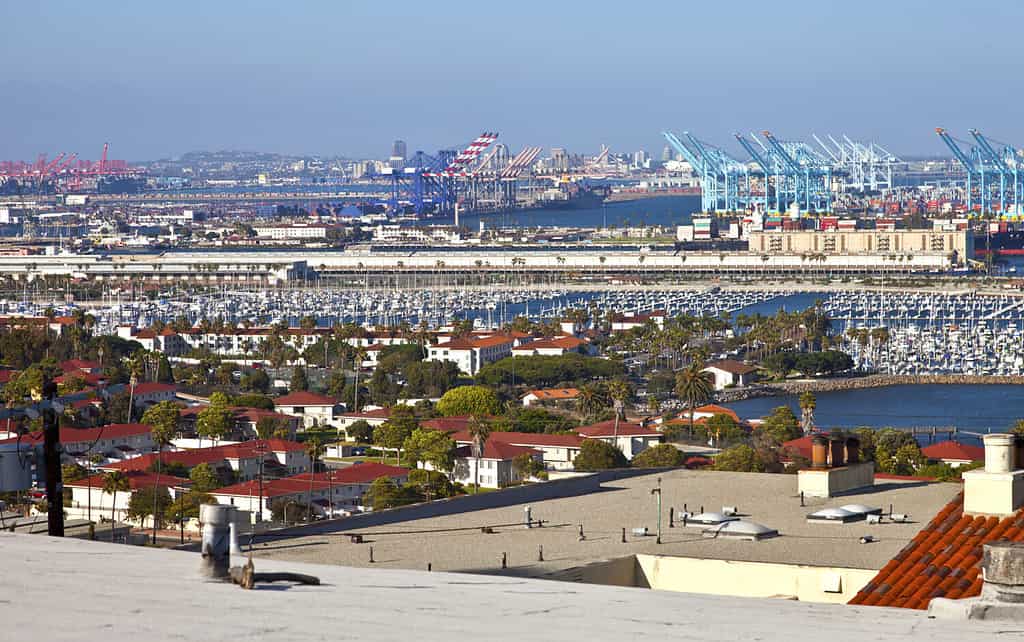
Commercial port operations and the San Pedro Bay marine wildlife coexist and thrive harmoniously. Water clarity has improved, special-status species are thriving, and there is no significant disruption to the bay’s ecosystem caused by non-native species.
©Rigucci/Shutterstock.com
The harbor is home to various unique habitats, from the open water areas of the Channels to the mud and sand and sea at the bottom. The ports provide a rich and diverse ecosystem supporting many marine life within the Los Angeles-Long Beach Harbor. From majestic sea lions to graceful pelicans, anchovies, kelp, shrimp, and eelgrass, over a thousand species of animals and plants thrive across the significant habitats within the harbor.
The three primary habitats that sustain this vibrant biodiversity are Pelagic Zone: This is the open water column where various marine species inhabit and traverse. It is an essential part of the harbor’s ecosystem. The seafloor (the sand and mud harbor bottom, beaches, and eelgrass beds) and the hard-substrate habitat (rocky shoreline, dock pilings, and kelp beds).
The ports conduct comprehensive surveys every five years to monitor and understand these biological resources. In the latest 2018 Biosurvey, a team of dedicated scientists and technicians conducted extensive sampling and analysis at more than 40 locations within the two ports.
Results of the 2018 Biosurvey

The ports provide a rich and diverse ecosystem supporting many marine life within the Los Angeles-Long Beach Harbor.
©Droneandy/Shutterstock.com
The survey involved collecting and examining fish eggs, larvae, adult and juvenile fish, benthic animals residing in the sediments, and scrapings from rocks and pilings. Furthermore, the team conducted diver surveys, measured the kelp and eelgrass beds, carried out bird surveys, and meticulously counted marine mammals.
Moreover, the results of this meticulous effort revealed some remarkable findings. Notably, over 56,000 fish and nearly 50,000 birds were identified, demonstrating the sheer abundance of marine life in the area. Additionally, more than 62,000 tiny animals were separated from sediment and scraping samples and then meticulously identified and weighed, adding further depth to the study’s comprehensive nature.
These surveys serve as a critical foundation for understanding the health and dynamics of the harbor’s marine ecosystem. By providing detailed insights into the various species and their populations, these findings enable the ports to continue their vital role as environmental stewards and effectively preserve this precious marine biodiversity.
Food Web Under the Port

Eelgrass Bed in Notojima island, Japan.
©inusuke/iStock via Getty Images
Within the harbor’s ecosystem, animals and plants engage in intricate interactions forming what biologists call a “food web.” This interconnected network illustrates the fundamental truth that all life within the harbor becomes sustenance for another organism. The delicate balance of this web of life ensures the continuity and stability of the entire ecosystem.
The harbor’s diverse range of habitats provides a nurturing home for an impressive array of life. This comprises more than 1,000 species, including fish, invertebrates, algae, birds, and marine mammals. Each organism has skillfully adapted to the specific physical conditions prevailing in their respective habitats.
Take, for instance, the intertidal zone, where organisms have evolved unique attributes to withstand wave action, bright sunlight, and exposure to air during low tides. Conversely, inhabitants of the deep, soft-bottom habitats (known as the benthos) have learned to thrive in dim or no light conditions and cope with variable food sources.
The proximity of shallow eelgrass beds and kelp forests to these deep habitats plays a crucial role in fueling food webs through the contribution of “detritus.” This organic matter includes pieces of kelp and eelgrass. They then break off and gradually decay as they settle to the seafloor, resembling the fallen leaves in a forest. Detritus is a vital food source for planktonic animals, seafloor invertebrates (infauna), those living on the seafloor (epifauna), and bacteria. These detritus-eating organisms, in turn, become significant food sources for larger animals. Animals like shrimp, crabs, and fish are then preyed upon by larger fish, birds, and marine mammals.
Food Web Cycle
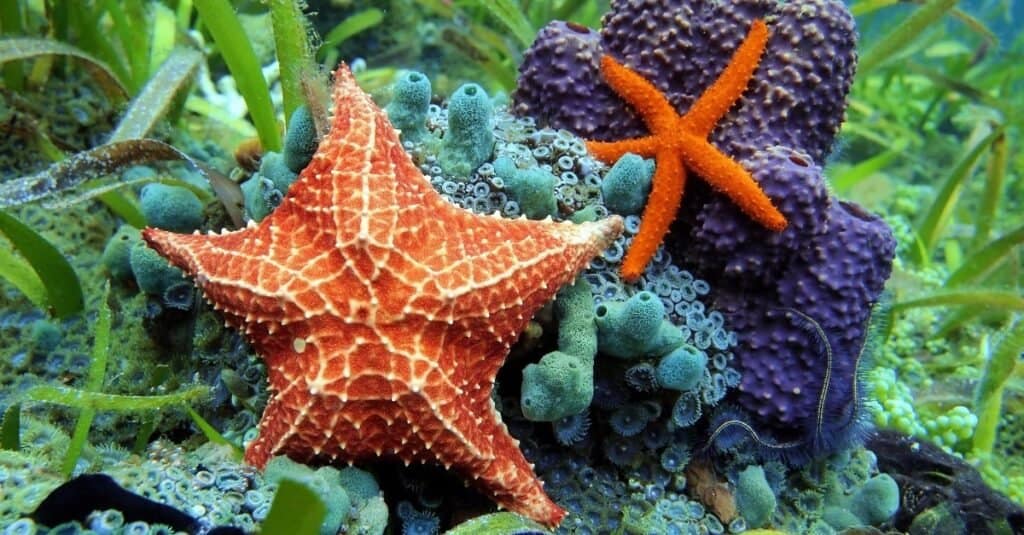
As far as speed is concerned
starfish
are very slow-moving ocean animals that are known for their snail-like movement speed.
©iStock.com/Damocean
In this intricate cycle, when animals perish and descend to the seabed, they are consumed by scavengers like sea stars and tiny benthic animals. Then they are ultimately recycled by bacteria to return essential nutrients to the environment. These nutrients, in turn, nourish phytoplankton, algae, and seagrasses, initiating the production cycle all over again. This delicate interplay of life ensures the continuous flow of energy and sustenance within the harbor’s ecosystem.
The Pelagic Zone: Vast Open Waters
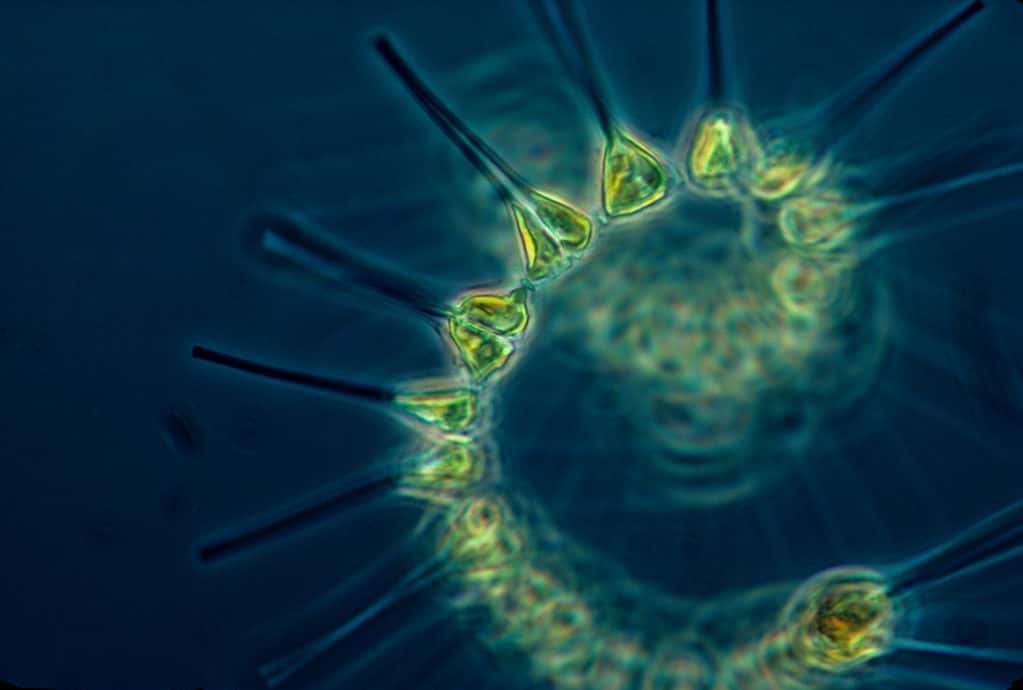
The harbor residents include plankton (tiny floating plants and animals)
©Porco_Rosso/Shutterstock.com
The expansive ‘pelagic zone’ encompasses the waters beyond the shoreline, extending from the surface to the seafloor. Within the harbors, this zone constitutes the most significant habitat type. Its residents, including plankton (tiny floating plants and animals) and various fishes, gracefully navigate the water column, ascending and descending to locate sustenance and evade predators.
Living in the open water, these creatures have evolved remarkable camouflage adaptations to blend seamlessly with their surroundings. The pelagic zone is a crucial foraging ground for larger predators. This includes barracuda, mackerel, dolphins, sea lions, harbor seals, and fish-eating birds like terns, pelicans, and cormorants.
During the 2018 Biosurvey, a remarkable 23 different species of fish were identified thriving in the pelagic zone. This highlighted the zone’s significance as a thriving ecosystem supporting diverse marine life.
Species that live in Port Los Angeles
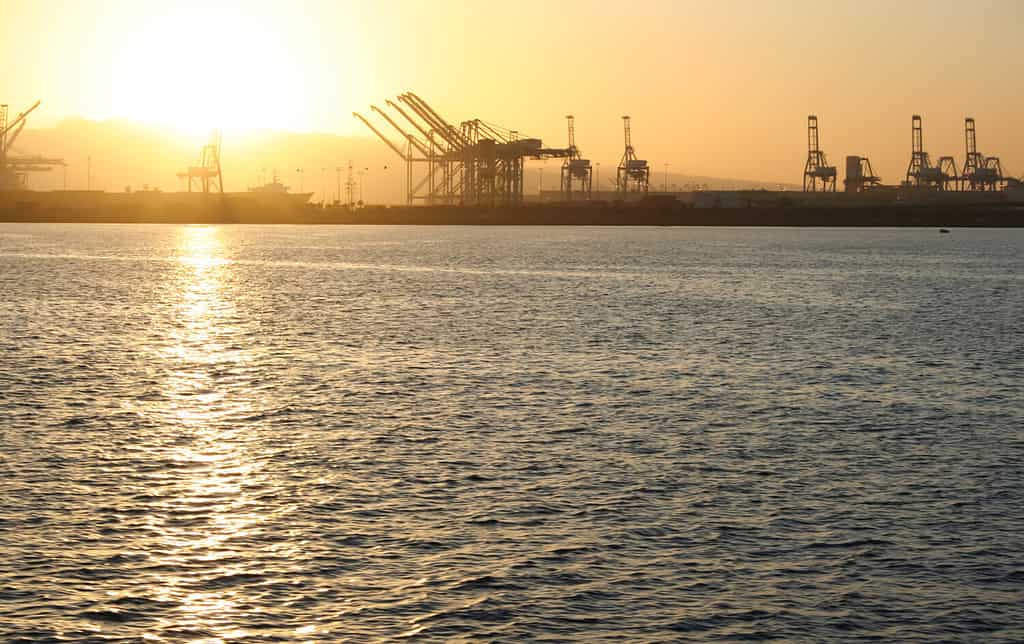
This delicate interplay of the port’s food web ensures the continuous flow of energy and sustenance within the harbor’s ecosystem.
©Atomazul/Shutterstock.com
The Port of Los Angeles, a bustling harbor environment, supports diverse marine species inhabiting its habitats. Some of the species commonly found in and around the Port of Los Angeles include:
Sea Lions
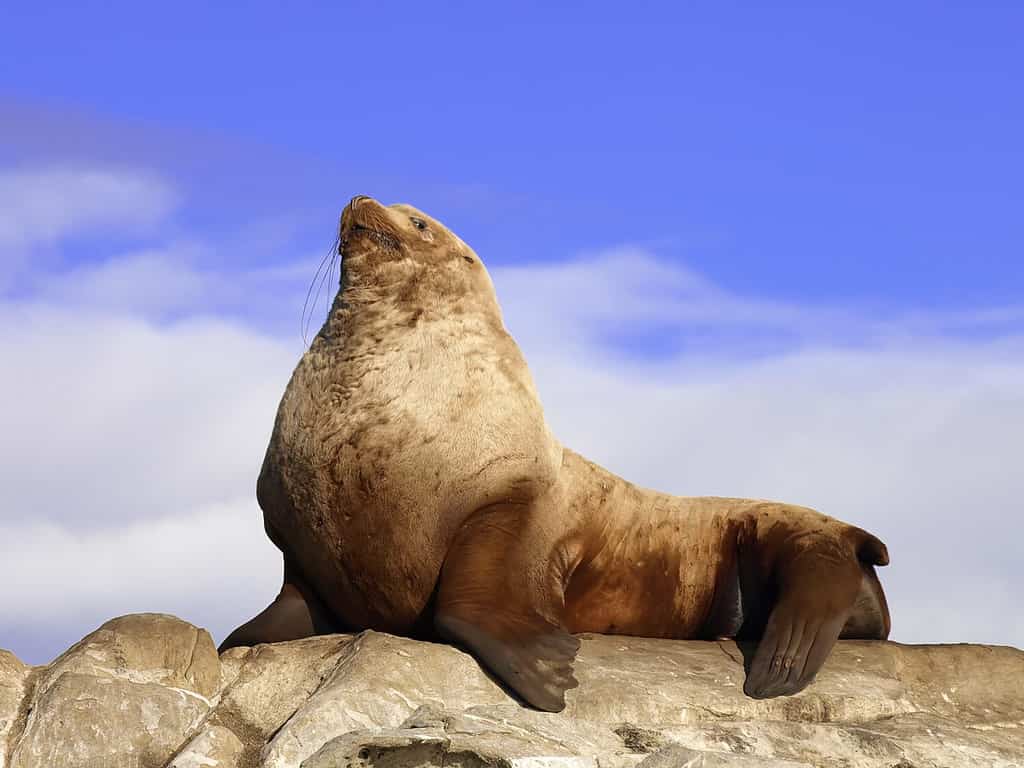
California sea lions (Zalophus californianus) are a familiar sight, often seen lounging on docks or buoys.
©NatureDiver/Shutterstock.com
Harbor Seals

Harbor seals (Phoca vitulina) are another common seal species found in the harbor, often spotted on beaches or rocky outcrops.
©Ulrike Jordan/Shutterstock.com
Fish
Various fish species inhabit the port, including anchovies, mackerel, halibut, sardines, and more.
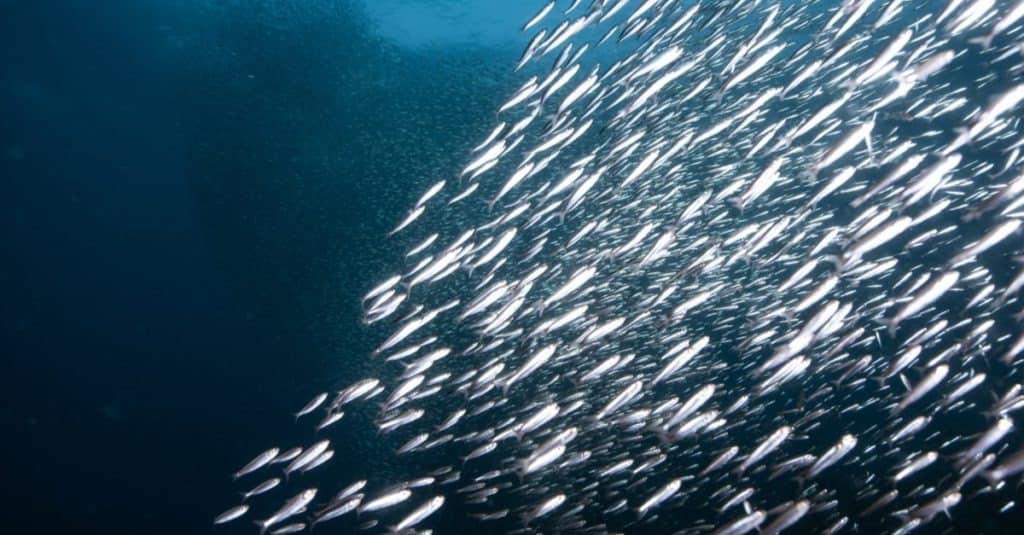
©Divefriday/Shutterstock.com
Birds
Numerous bird species, including pelicans, cormorants, terns, gulls, and other seabirds, depend on the harbor’s resources for feeding and nesting.
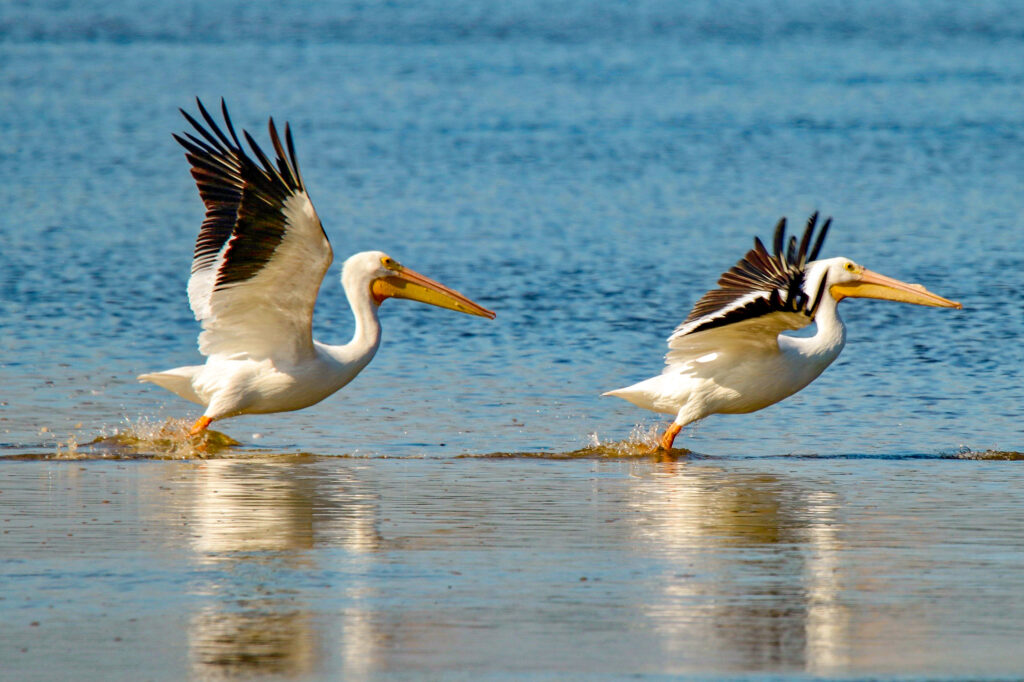
Pelican
parents often fish for their young and return food to the nest.
©Susan Rydberg/Shutterstock.com
Invertebrates
The harbor supports a variety of invertebrates, such as crabs, shrimp, clams, and other marine organisms.

Snow crabs get their name from their snowy white meat.
©Kairos_JC/Shutterstock.com
Algae

©Damsea/Shutterstock.com
Various types of algae, including kelp and other seaweeds, play a crucial role in the harbor’s ecosystem.
Phytoplankton and Zooplankton

©Choksawatdikorn/Shutterstock.com
These microscopic organisms form the base of the marine food chain, providing food for larger species.
Dolphins

Dolphins travel in pods, but a ‘megapod’ is likely a combination of a few different pods!
©iStock.com/lennjo
Occasionally, dolphins like common dolphins (Delphinus delphis) may swim near the harbor entrance.
How Deep is Los Angeles Port?
The cargo coming into the port represents approximately 20% of all freight coming into the United States. The port’s channel depth is 53 feet (16 m).
Who Owns Port Los Angeles?

Flag of Los Angeles.
©Ponderosapine210 / CC BY-SA 4.0 – License
The Port of Los Angeles is a City of Los Angeles department. It is also known as the Los Angeles Harbor Department. It is governed by the Los Angeles Board of Harbor Commissioners, a panel appointed by the Mayor of Los Angeles. Although the port is a City department, City taxes do not support it.
How Much is the Port of LA worth?
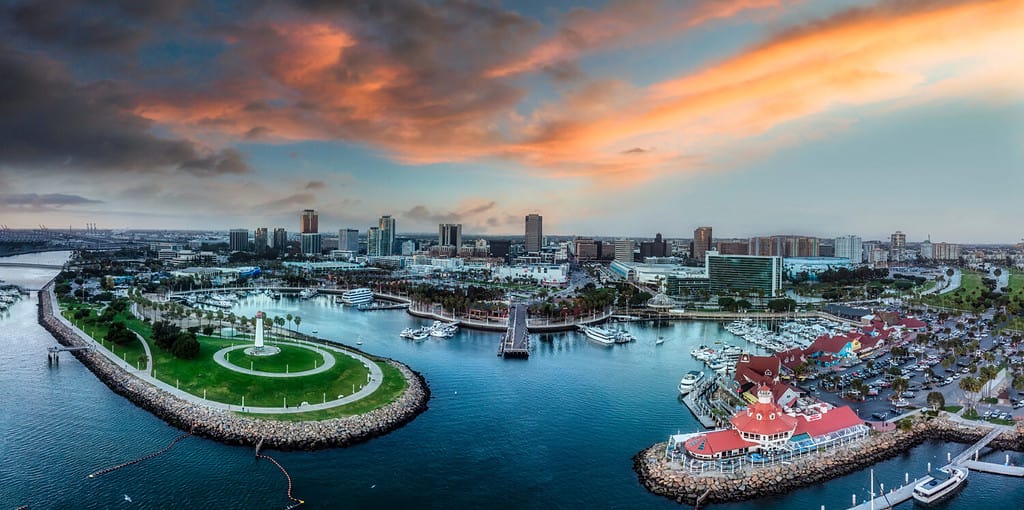
The port is governed by the Los Angeles Board of Harbor Commissioners, a panel appointed by the Mayor of Los Angeles. Although the port is a City department, City taxes do not support it.
©Larry Gibson/Shutterstock.com
Revenues from fees for shipping services and leasing Port property fund the Port of Los Angeles. The port has an AA bond rating with a stable outlook. It contains the highest rating given to a port without taxing authority.
Over the fiscal years 2021/22, 2020/21, and 2019/20, the port has seen a steady increase in cargo value. It reaches $311 billion, $294 billion, and $259 billion, respectively. The adopted budget has also shown fluctuations. The figures show $1.7 billion, $1.5 billion, and $1.6 billion for the respective fiscal years. The operating revenue has also seen a positive trend. It escalates from $628 million in 2022 to $572 million in 2021 and $468 million in 2020. Conversely, operating expenses were $255 million, $274 million, and $274 million for the fiscal years in the same order. As for capital improvement programs, investments amounted to $90 million, $112 million, and $80 million. This reflected the port’s commitment to enhancing infrastructure and growth.
Key Statistics
- Ranked #1 container port in the Western Hemisphere for 23 consecutive years (2000-2022)
- Handled 9.9 million TEUs in CY 2022 (second-highest year on record)
- Handled 10.7 million TEUs in CY 2021 (highest year on record)
- A department of the City of Los Angeles (Los Angeles Harbor Department)
- Governed by the Los Angeles Board of Harbor Commissioners
- Founded December 9, 1907
Infrastructure
- 7,500 acres (4,300 land/3,200 water)
- 43 miles of waterfront
- -53′ Main Channel water depth
- 25 cargo terminals, including seven container terminals
- 82 ship-to-shore container cranes
- 116 miles of rail, including five on-dock railyards and a classification yard
- 15 marinas with 3,736 recreational vessel slips and dry docks
Economic Impact
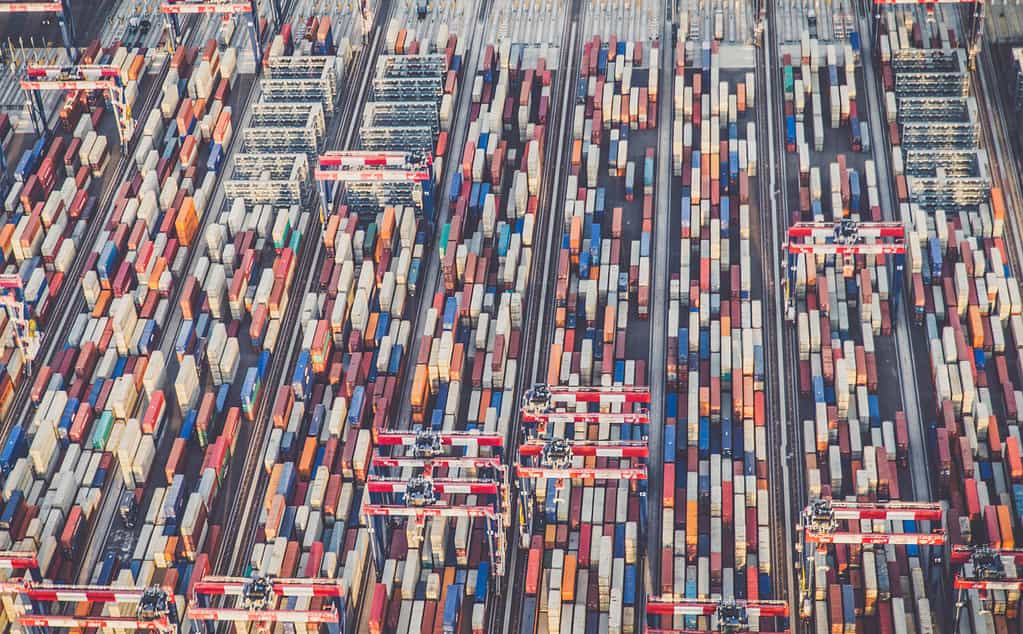
The port holds an impressive market share. It represents 40% of the West Coast and 16% of the United States market share.
©oneinchpunch/Shutterstock.com
In conjunction with the Port of Long Beach, the Port of Los Angeles constitutes the San Pedro Bay port complex, a global leader in container handling per ship call. The port complex holds significant economic importance based on containerized waterborne import cargo statistics from CY 2021. Los Angeles alone provides 124,000 jobs, equating to approximately 1 in 15 positions. The five-county region, including Los Angeles, Orange, Riverside, San Bernardino, and Ventura counties, benefits from 446,000 jobs, approximately 1 in 19 positions. Moreover, the port complex has far-reaching impacts. It contributes to 1,349,000 jobs throughout the United States and around 1 in 117 jobs nationwide. Additionally, it holds an impressive market share. It represents 40% of the West Coast and 16% of the United States market share. This reflects the port complex’s significant influence on the regional and national economy. The port creates opportunities and drives growth across various sectors.
The photo featured at the top of this post is © Droneandy/Shutterstock.com
Thank you for reading! Have some feedback for us? Contact the AZ Animals editorial team.






